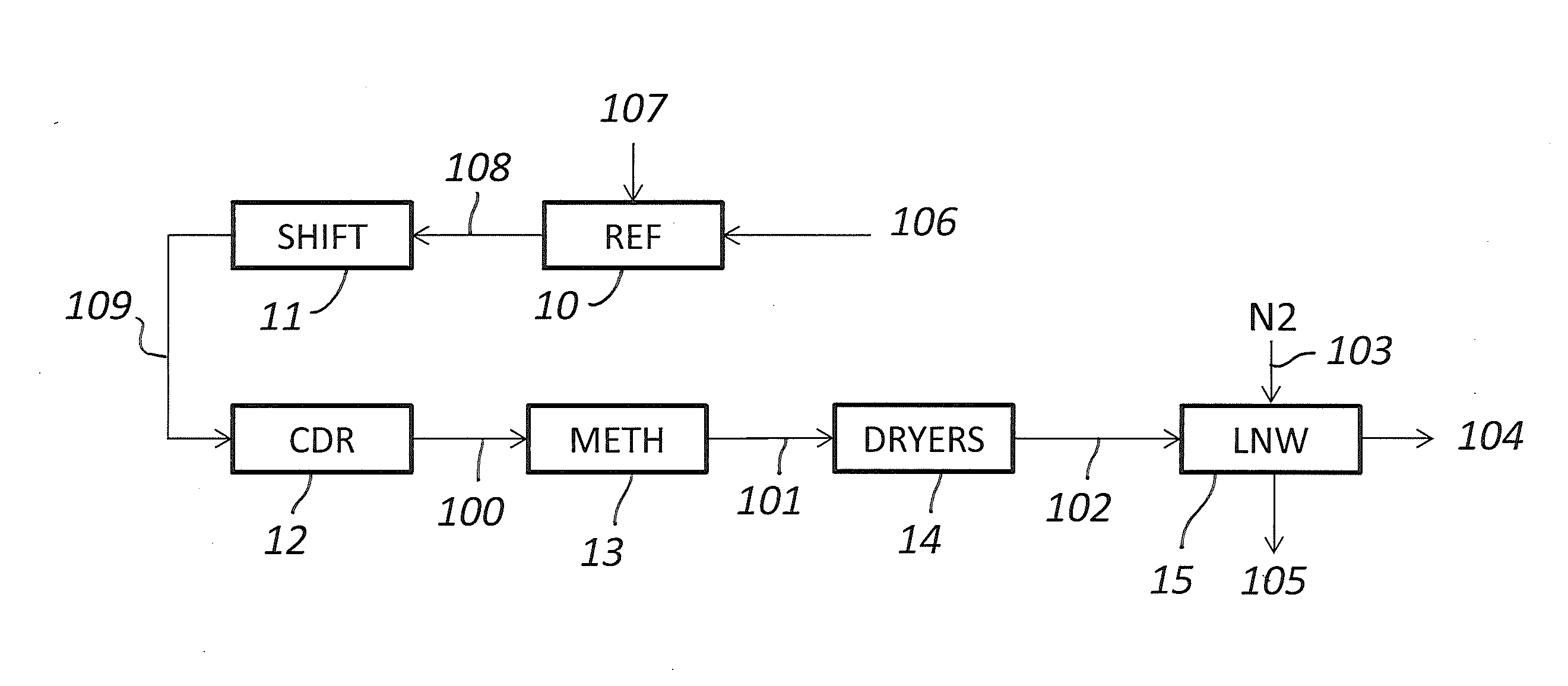Process for purification of a synthesis gas containing hydrogen and impurities
- Summary
- Abstract
- Description
- Claims
- Application Information
AI Technical Summary
Benefits of technology
Problems solved by technology
Method used
Image
Examples
Embodiment Construction
[0030]Referring to FIG. 1, a current of hydrogen syngas 100 is composed mostly of hydrogen (H2), and contains minor amounts of CO, CH4, CO2, N2, Argon and water. For example H2 is more than 90%, preferably more than 95%, CO and CH4 are around 1-2%, and the other components are preferably less than 1%.
[0031]Said current 100 comes from previous treatments of shift and carbon dioxide removal, as will be explained below. Hence the CO and CO2 contained in the current 100 are residual amounts after the above treatment steps.
[0032]Said current 100, according to the shown embodiment, is fed to a methanator 13 where CO and CO2 are converted to methane and water. The syngas 101 leaving the methanator 13 contains practically no CO and CO2, and a certain amount of methane, for example around 3% of methane.
[0033]Said gas 101 is fed to a dehydration unit 14, to remove residual water. The dehydrated gas 102 leaving said unit 14 is sent to a cryogenic purification section, which in the example is e...
PUM
 Login to View More
Login to View More Abstract
Description
Claims
Application Information
 Login to View More
Login to View More - R&D
- Intellectual Property
- Life Sciences
- Materials
- Tech Scout
- Unparalleled Data Quality
- Higher Quality Content
- 60% Fewer Hallucinations
Browse by: Latest US Patents, China's latest patents, Technical Efficacy Thesaurus, Application Domain, Technology Topic, Popular Technical Reports.
© 2025 PatSnap. All rights reserved.Legal|Privacy policy|Modern Slavery Act Transparency Statement|Sitemap|About US| Contact US: help@patsnap.com


